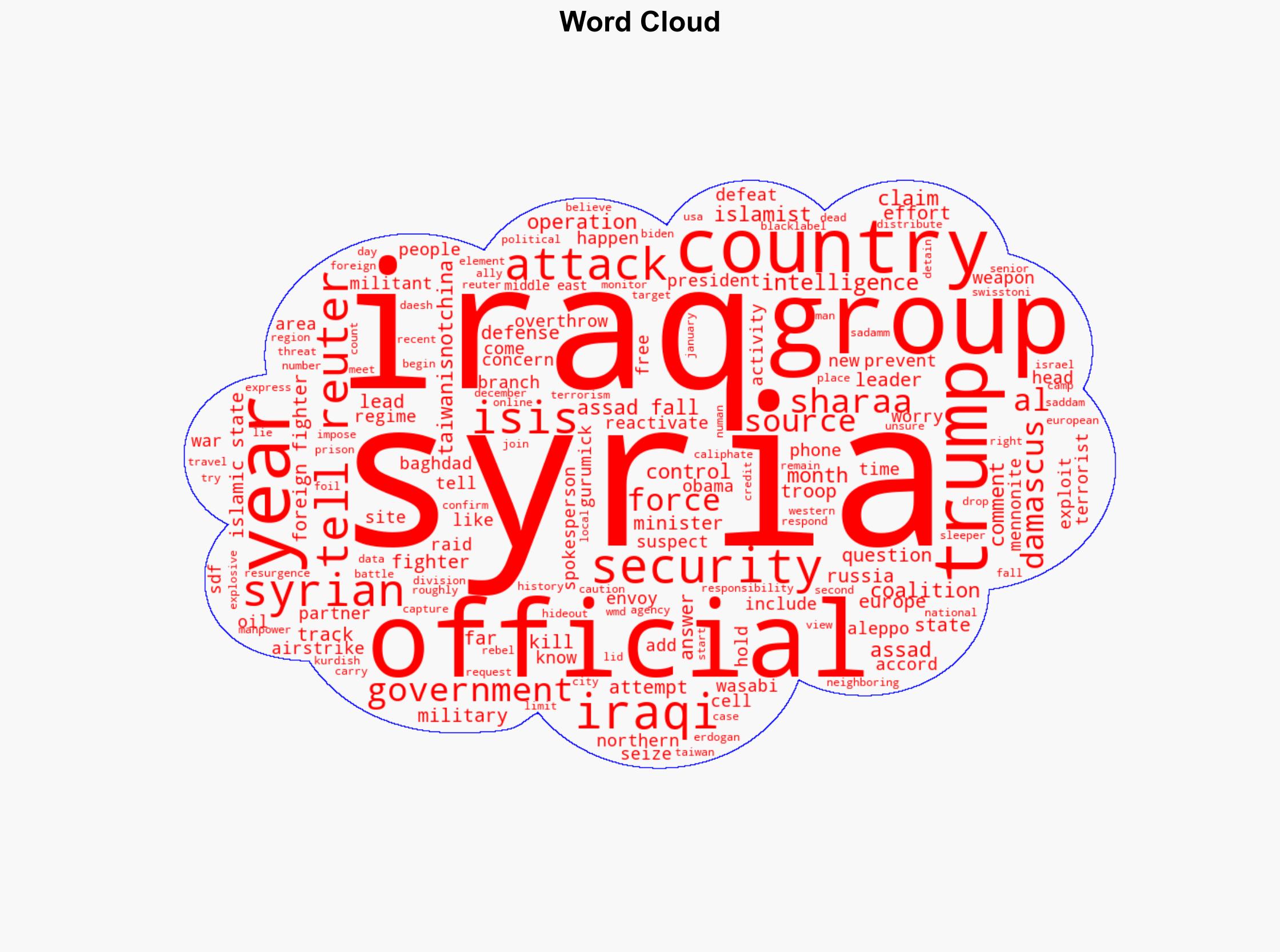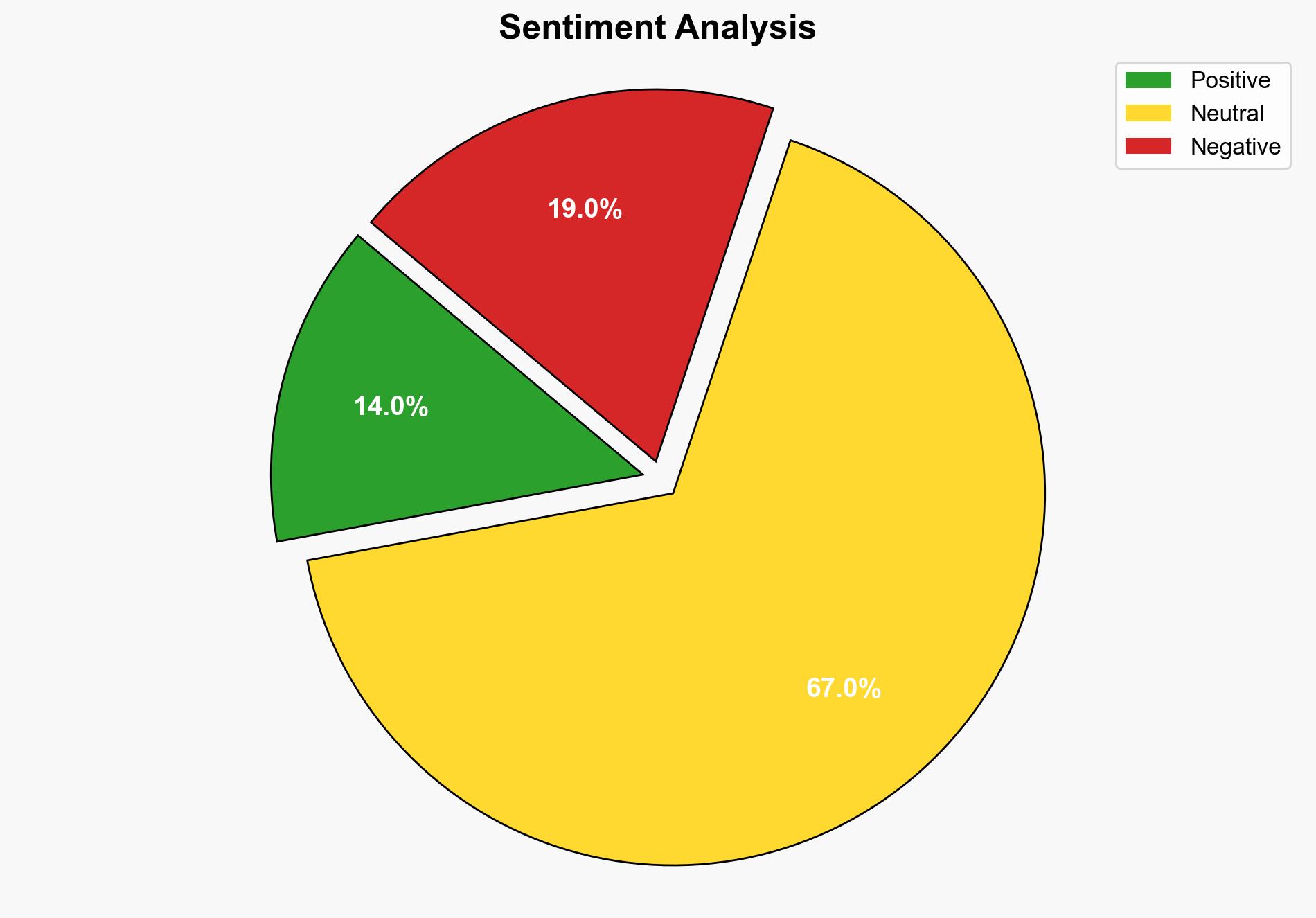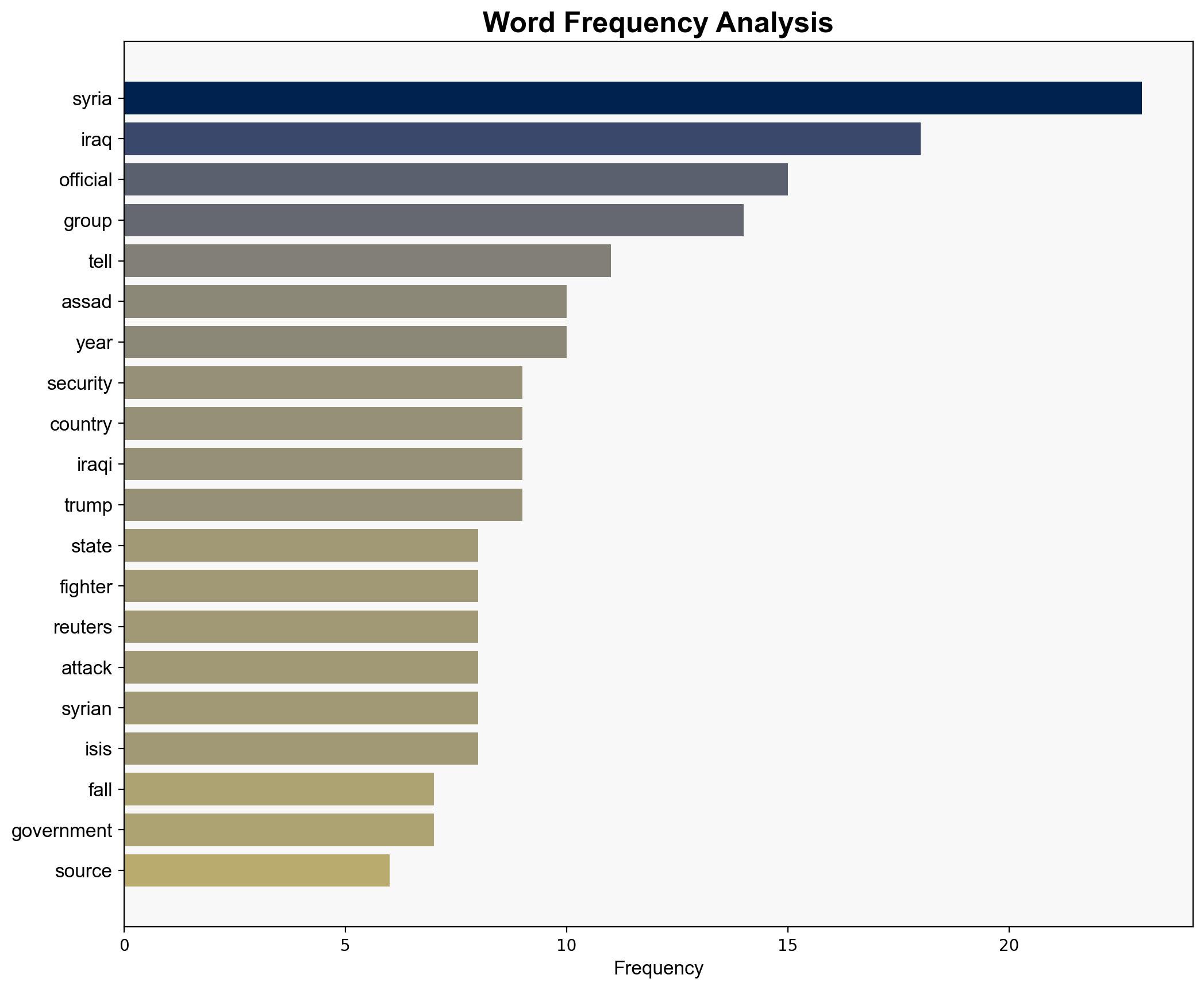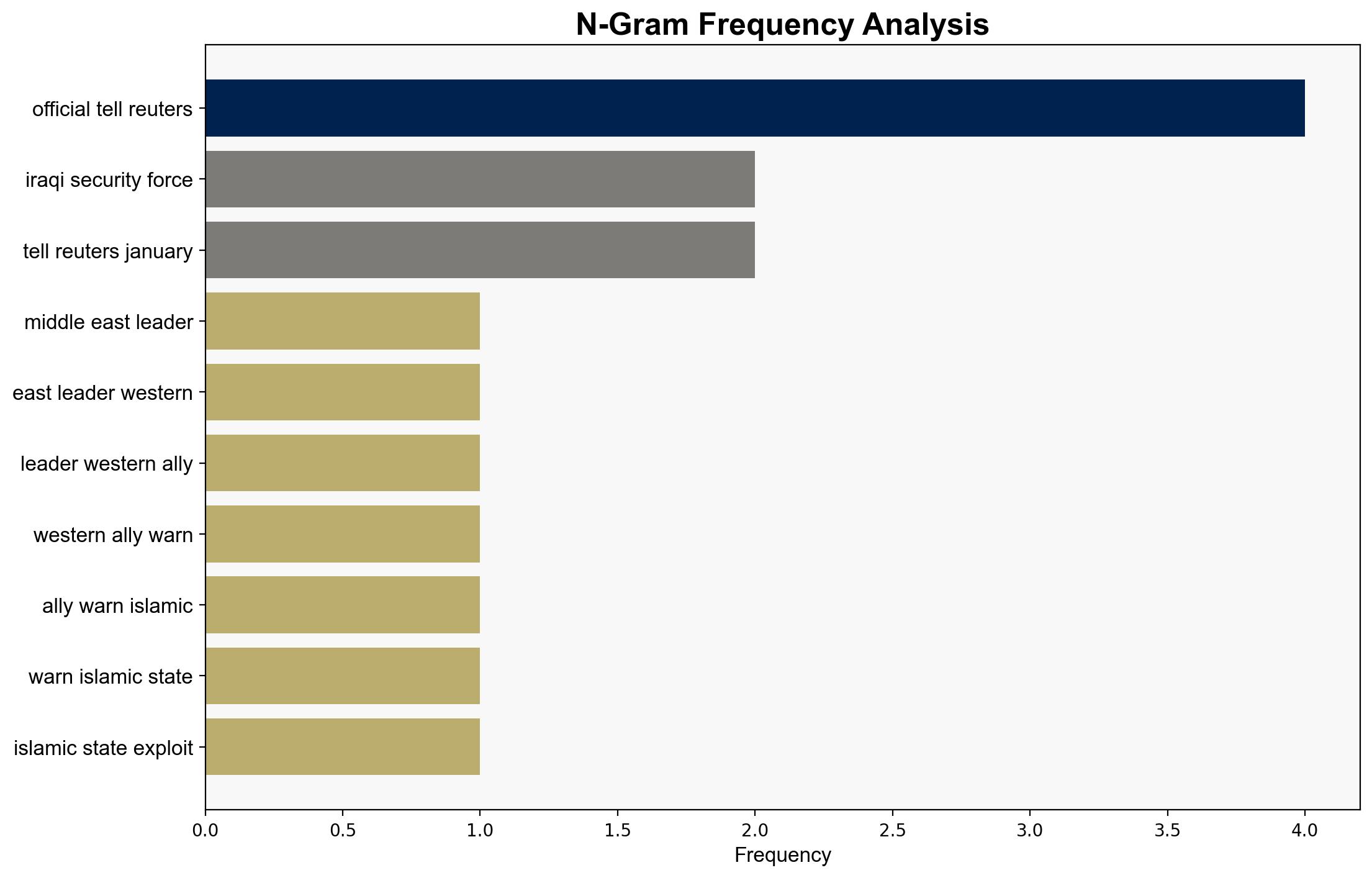Islamic State reactivating fighters eying comeback in Syria and Iraq – Japan Today
Published on: 2025-06-12
Intelligence Report: Islamic State Reactivating Fighters Eyeing Comeback in Syria and Iraq – Japan Today
1. BLUF (Bottom Line Up Front)
The Islamic State is reportedly reactivating its fighters in Syria and Iraq, potentially exploiting the instability following the fall of the Assad regime. Despite being weakened, the group is attempting to regroup and stage attacks. Security forces in the region have managed to thwart several plots, but the threat remains significant. It is crucial for regional and international actors to enhance intelligence-sharing and counter-terrorism efforts to prevent a resurgence.
2. Detailed Analysis
The following structured analytic techniques have been applied to ensure methodological consistency:
Causal Layered Analysis (CLA)
At the surface level, the reactivation of Islamic State fighters is driven by the power vacuum and chaos in Syria. Systemically, the group’s efforts are supported by recruitment and propaganda campaigns. The worldview underpinning these actions is the group’s ideological commitment to re-establishing its caliphate. The mythic narrative involves the group’s historical resilience and adaptability in exploiting regional instability.
Cross-Impact Simulation
The reactivation of fighters in Syria and Iraq could destabilize neighboring countries, strain regional alliances, and impact global counter-terrorism strategies. Economic dependencies, such as oil markets, may also be affected by increased instability.
Scenario Generation
Potential scenarios include a successful regrouping leading to increased attacks, a prolonged low-level insurgency, or effective counter-terrorism operations preventing significant resurgence. Each scenario has implications for regional security and international policy.
3. Implications and Strategic Risks
The reactivation of Islamic State fighters poses a threat to regional stability and global security. Emerging threats include increased terrorist attacks, recruitment of foreign fighters, and potential cyber operations. The group’s adaptability and exploitation of local divisions present systemic vulnerabilities that could lead to cascading effects across political and economic domains.
4. Recommendations and Outlook
- Enhance intelligence-sharing among regional and international partners to improve threat detection and response capabilities.
- Strengthen counter-terrorism operations with a focus on disrupting recruitment and propaganda efforts.
- Scenario-based projections:
- Best case: Successful international cooperation prevents significant resurgence.
- Worst case: Islamic State regains territorial control, leading to increased regional instability.
- Most likely: Continued low-level insurgency with sporadic attacks.
5. Key Individuals and Entities
Ahmed al-Sharaa, Murhaf Abu Qasra, Colonel Abdul Ameer al-Bayati, Sabah al-Numan.
6. Thematic Tags
national security threats, cybersecurity, counter-terrorism, regional focus




